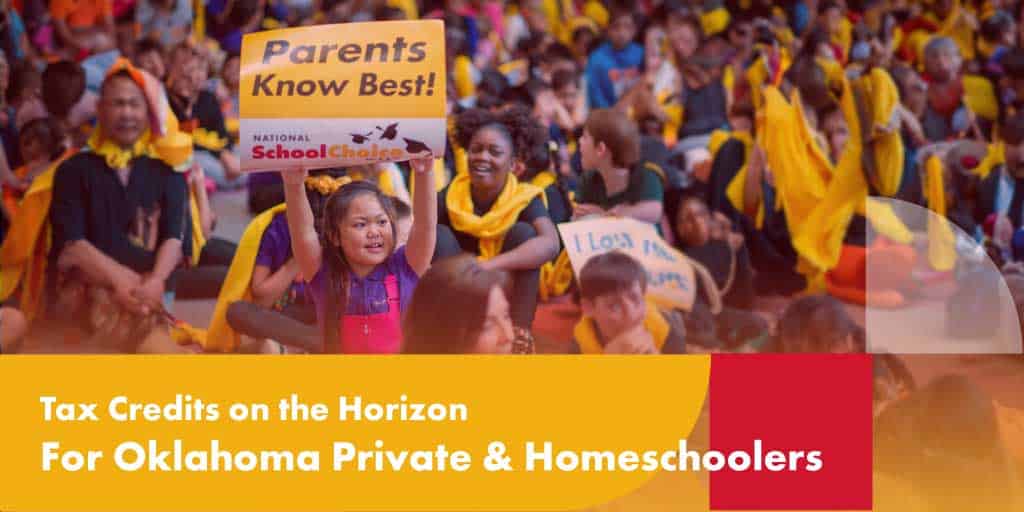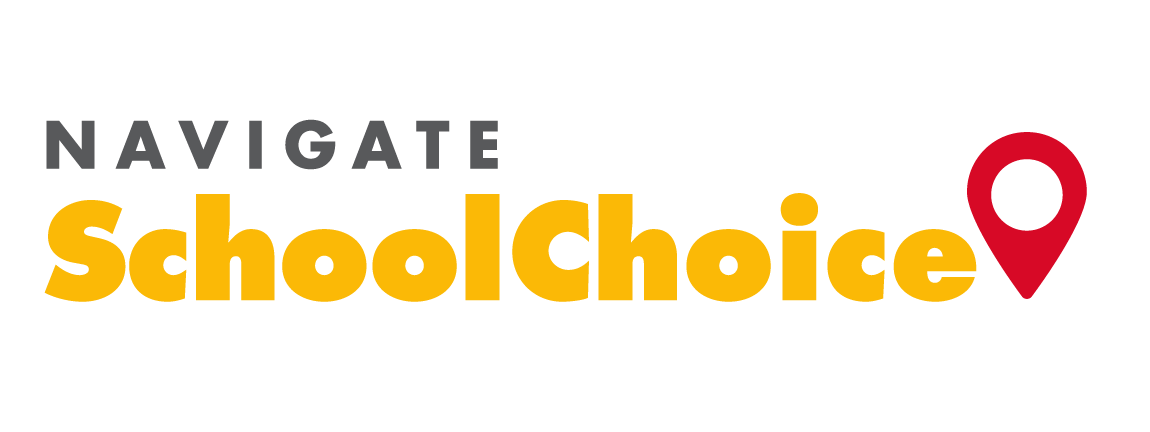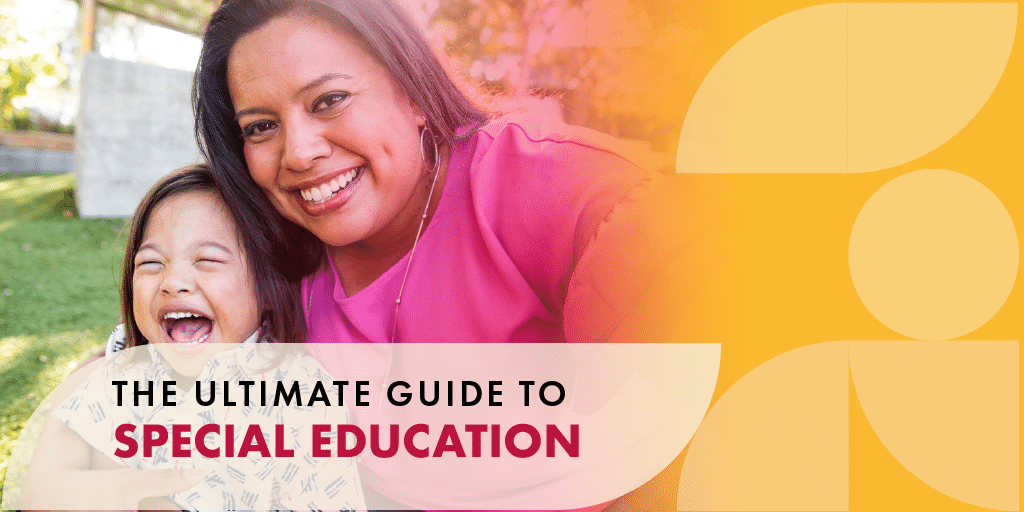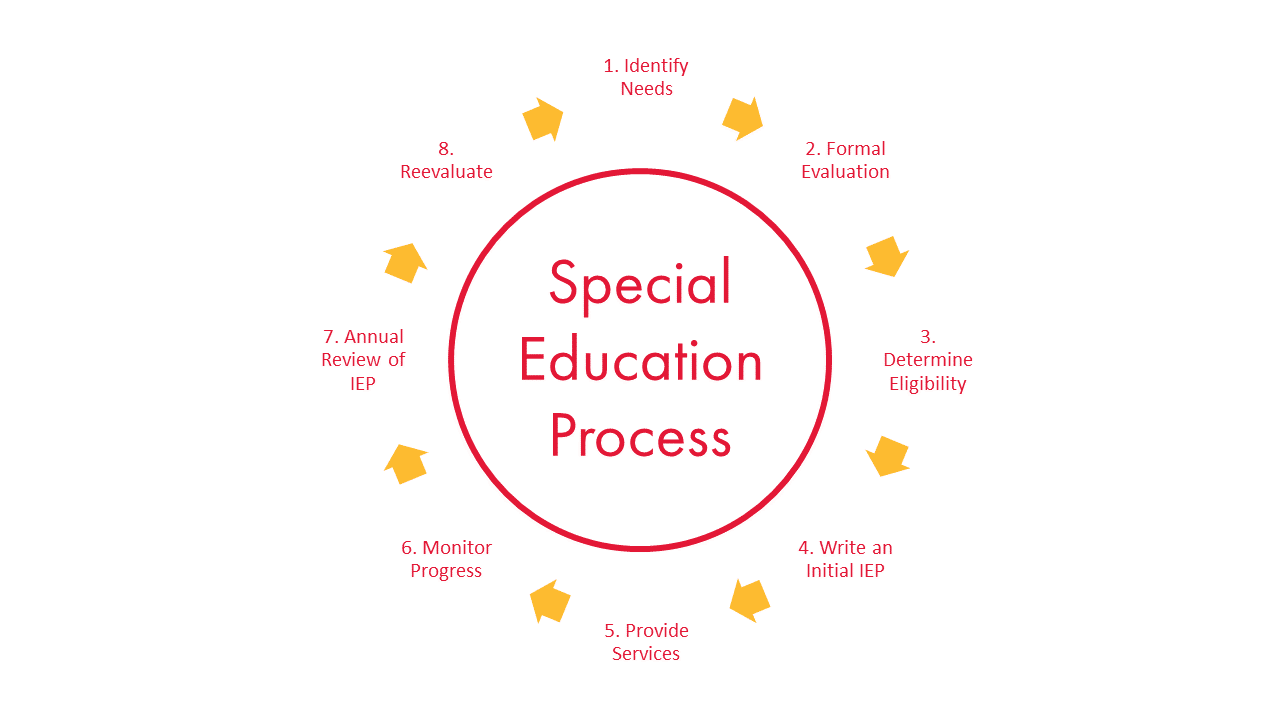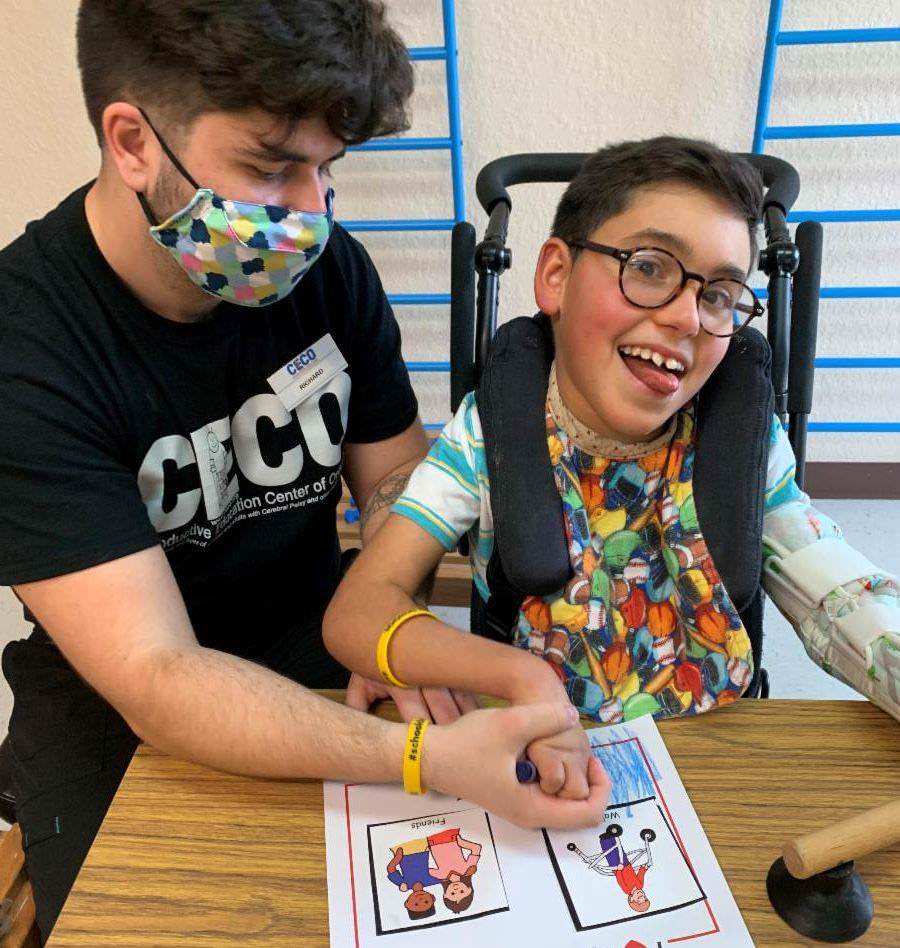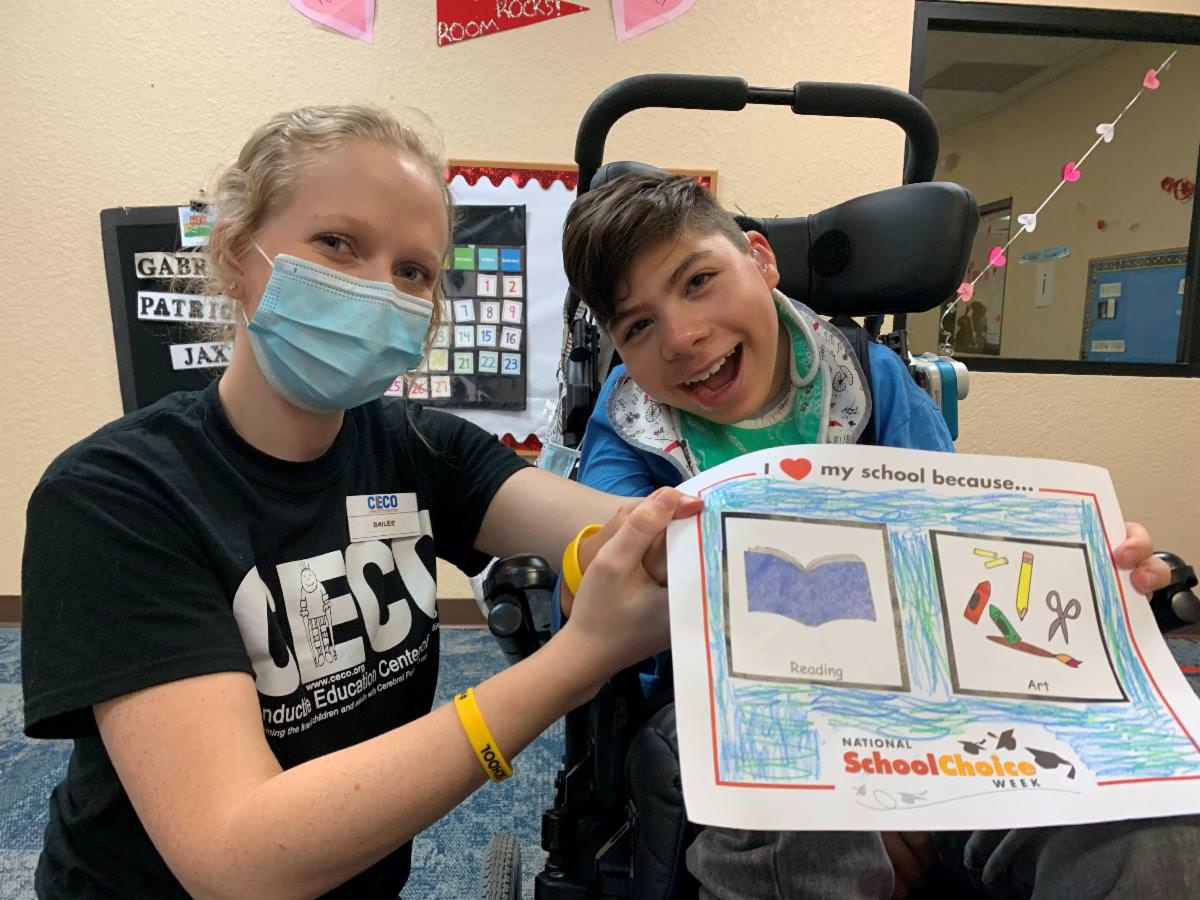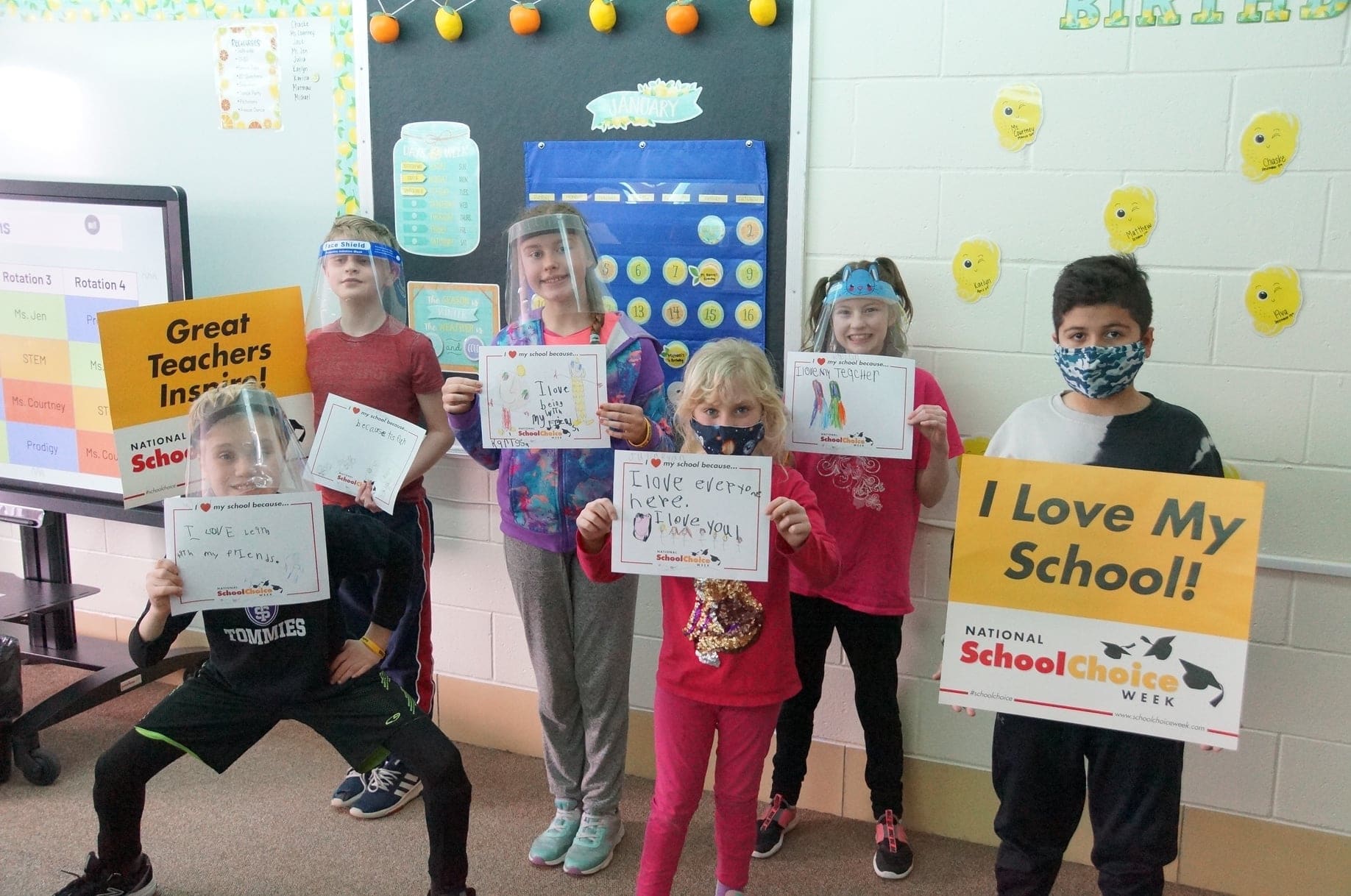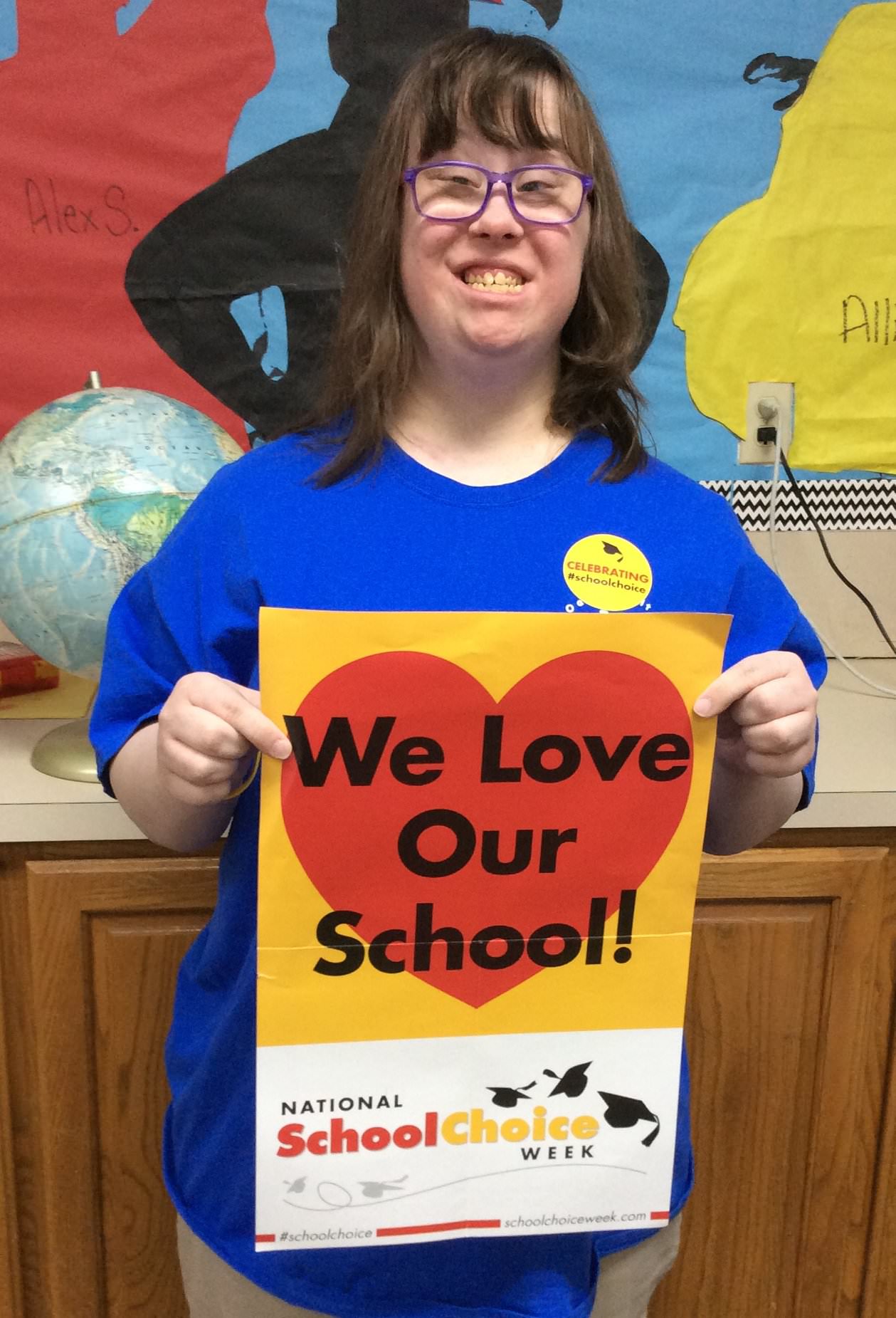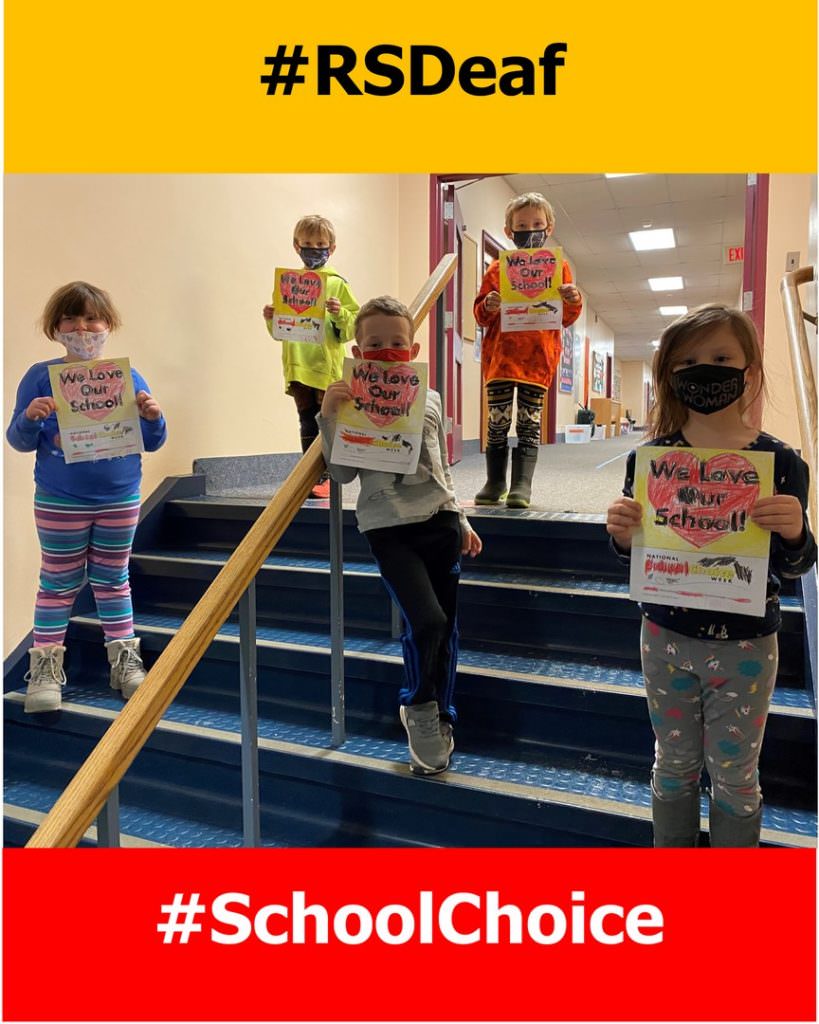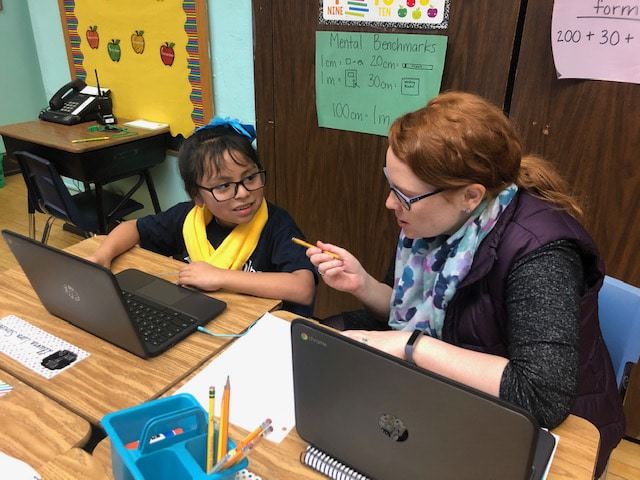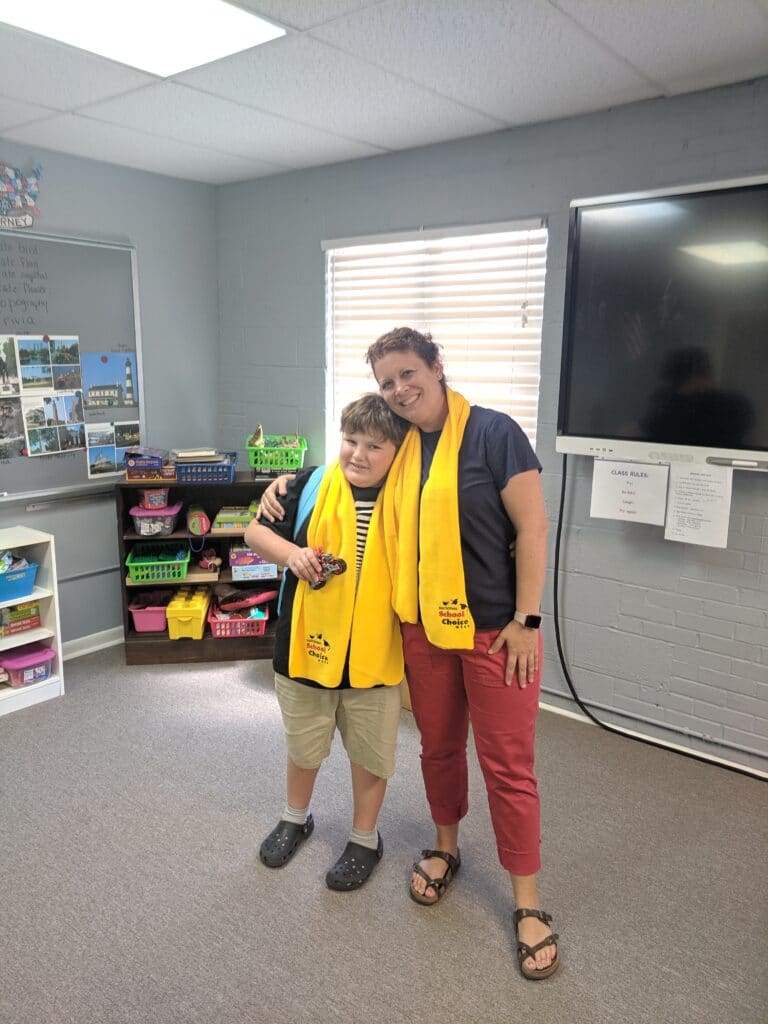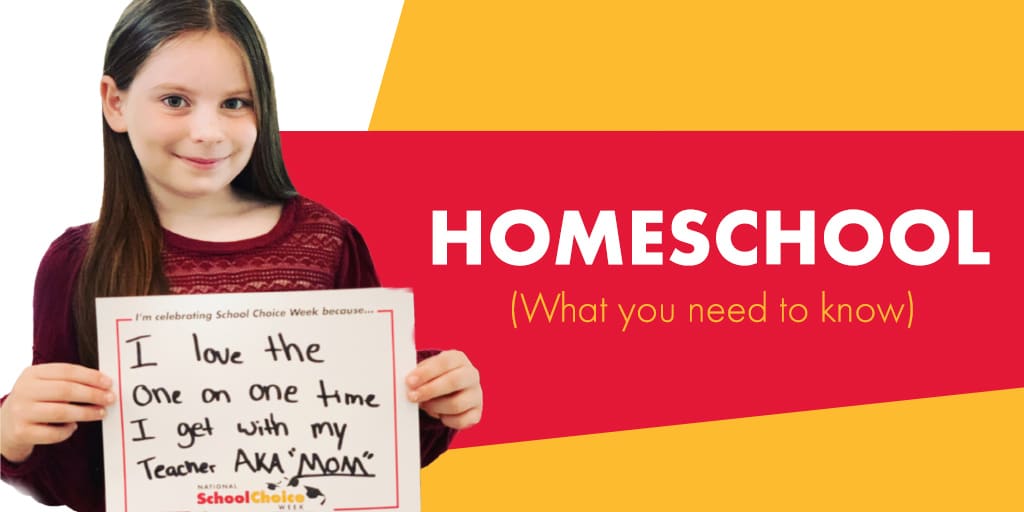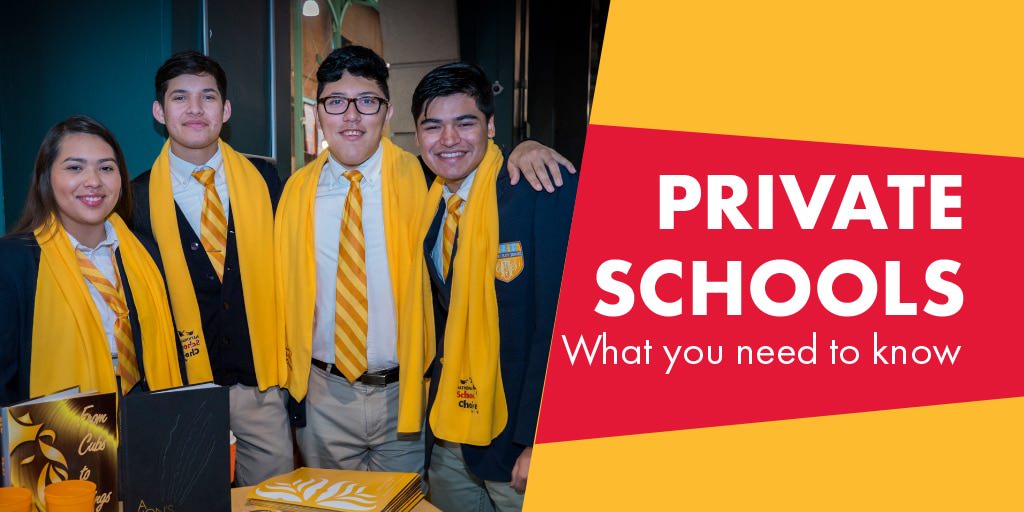This Content Has a New Home!
Your journey to the perfect education fit just got easier. Check out this page in action on our new site and navigate school choice with ease at MySchoolChoice.com.
Parents desperately want the best education for their kids. But sometimes it can be hard to find! It can feel like a full-time job to understand how the education system works and what the different words you hear in education mean. If you worry that you don’t have time to comb through the internet and figure it out, you’re not alone. In fact, so many parents have shared that sentiment with us that we’ve put together this education glossary, packed with clear explanations of K-12 school terms.
The education world shouldn’t be so confusing. To help, we’ve created a glossary of education terms you may hear in choosing a school for your child. Understanding what these terms really mean can make the school search process smoother.
Quickly search for an education term by hitting Ctrl+F (on a Windows PC, Chromebook, or Linux system), or Command+F (on a Mac). If there are more terms you’d like to see added to this K-12 education glossary, let us know at info@schoolchoiceweek.com. We will continue to add to this page as we receive recommendations.
Don’t forget to bookmark this page for easy reference!
A
Accessibility: In education, accessibility refers to students with disabilities being offered the opportunity to encounter the same information and services as those without disabilities.
Accommodation: An accommodation is a change or adaptation that helps a student overcome or work with their disability. The content that the child is expected to learn does not change with an accommodation. These supports and services assist a student with accessing the general curriculum and demonstrating learning.
Accountability: Accountability refers to what measures are in place so that people are held responsible to standards and meeting their goals in education. School accreditation, for example, can hold school staff accountable to their accrediting organization. If they fail to meet the accreditor’s standards for quality and growth, a school can lose accreditation.
While many states use a rating system (like A-F grades) to describe school performance for public school options, each state has its own specific measures of school quality and student success. In Virginia, for instance, the Standards of Learning, annual statewide assessments, and accreditation ratings make up the accountability system for public schools. Accountability requirements for private schools and for homeschooling families also vary by state.
School principals are accountable to their superintendent, who is accountable to the school board. Ultimately, schools, administrators, and school boards are (or should be) primarily accountable to the parents of the students in their schools, and to the taxpayers who fund those schools.
Accreditation: If a school has accreditation, that means it has met the quality standards of an accrediting organization. While accreditation is streamlined at the college level, accreditation of K-12 schools is more varied and inconsistent. Each state has its own accreditation standards, and not all states require accreditation for every public school.
The major accreditors for K-12 schools include Cognia, the Middle States Association, the Western Association of Schools and Colleges, and the New England Association of Schools and Colleges. You should be able to find information about your public school’s accreditation on your school’s website or an accreditor’s website.
Private schools generally set their own rules for accreditation. Some private schools do choose to participate in accreditation programs. This can help show parents their commitment to academic excellence and growth. Besides the major accreditors and the National Council for Private School Accreditation, there are also smaller accreditors that private schools may use, such as Christian or Montessori ones.
Accreditation is just one piece of the puzzle to consider when choosing a school. You can always decide to switch between an unaccredited and an accredited school. If you do, your child may take a placement test to prove competency of their grade level.
Achievement Gap: An education achievement gap is the difference in academic performance or graduation rates between groups of students, and may be influenced by a wide variety of societal factors. For example, white students from the class of 2020 averaged a math score of 547 on the SAT while Latino or Hispanic students averaged 478. Whether an achievement gap is widening or closing over time can play an important role in education policy. Today, many educators are concerned about Black-white academic achievement gaps widening in the aftermath of pandemic-related shutdowns.
Adaptive Behavior: In special education, adaptive behavior refers to an individual’s ability to act socially appropriate and personally responsible. Educators generally measure this by identifying how well the individual manages in their own environment.
Adequate Yearly Progress (AYP): Adequate Yearly Progress initially referred to a measure of accountability for student performance that schools, districts, and states were held to by the No Child Left Behind Act. In 2015, the Every Student Succeeds Act replaced No Child Left Behind. The Every Student Succeeds Act gave each state more flexibility to define adequate yearly progress. Now, for example, not just state tests but also graduation rates and school safety can be used to track progress a school is making toward the goal of having all students proficient.
Admission, Review, and Dismissal (ARD): The Admission, Review, and Dismissal (ARD) team is a team of individuals that includes, at a minimum, parents, a special education teacher, someone qualified to interpret test results, district representation, and a general education teacher. These individuals are responsible for the development and review of a child’s IEP, evaluation/re-evaluation, and behavior plans as needed. The ARD team must meet at least once a year by law; however, teachers or parents can call at any time. In some states, this team is called the Individualized Education Program (IEP) team.
Advanced Placement (AP) Program: The Advanced Placement (AP) program gives high school students the opportunity to take college-level work. AP classes can be a rewarding experience for students looking for a challenge. Plus, by taking AP exams, students can earn credit accepted at many colleges and universities. You can search prospective colleges at the College Board to learn more about what AP courses they award credit for.
Age of Majority: The age of majority is the age at which a student gains the rights to make his or her own decisions – including any decision related to education. Most states describe the age of majority as18 years old.
Alternative Assessments: An alternative assessment is an opportunity for a student to demonstrate the skills they’ve learned via a means other than traditional testing. An alternative assessment may look like presenting a portfolio of work samples, completing a project, or keeping a journal of learning.
A student in a science class may take a traditional test measuring their knowledge. Or, for the student’s final grade, the teacher may have them present a science experiment showing what they’ve learned. That’s an example of an alternative assessment.
Alternative School: Alternative schools are places of learning for students who have not thrived in traditional classrooms. Alternative schools may have a smaller student-to-staff ratio; they may be able to offer specialized services that meet students’ behavioral needs.
American Collegiate Test (ACT): The American Collegiate Test or ACT is one of the most commonly used assessment tests measuring a high school student’s readiness for college. Many colleges and universities consider ACT, SAT, or even CLT scores in their admissions decision. The ACT assesses students in the areas of English, Reading, Math, and Science. Usually, students take it their junior or senior year of high school.
Americans with Disabilities Act (ADA): The Americans with Disabilities Act is a law enacted in 1990 that gives civil rights protections to individuals with disabilities. This law protects people with disabilities at work, school, and in public places.
Annual Review: In special education, an annual review is a meeting that occurs once a year where the Individualized Education Program (IEP) Team or ARD Committee reviews a student’s progress towards their goals, looks at new data, and updates information related to what the student needs to be successful.
Annual Goal: In special education, an annual goal is a required component of an Individualized Education Program (IEP) that states what a student will achieve in a year.
Antecedent Behavioral Consequences Chart (ABC): The Antecedent Behavioral Consequences (ABC) chart is a behavioral observation tool used to create a record of a student’s behaviors. This tool assists with determining the triggers and motivations behind behaviors. As part of the ABC chart, the observer records what happens just before a behavior. The observer also records a description of the behavior and the consequence of the behavior. This type of observation is frequently completed as part of a functional behavioral assessment (FBA).
Applied Behavioral Analysis (ABA): Applied Behavioral Analysis (ABA) is a technique used for correcting behavior and social skill deficits. It is based on an understanding of how positive reinforcement causes behaviors to repeat. One pillar of ABA is discrete trial training (DTT). This means breaking a skill down into its most basic steps and teaching it systematically. Each component lays the foundation for the next.
Assessment: Assessments are ways of collecting information about a student’s strengths, needs, and interests. People generally think of assessments as tests. But, they can also include observation, record review, and talking with the student and/or parents.
Assistive Technology (AT): Assistive technology is technology used by individuals with disabilities to perform functions in the education environment that they might otherwise not be able to do. Some examples of assistive technology can include walkers, wheelchairs, sound amplifiers, communication devices, pencil grips, or word prediction software.
At-risk: A student is “at-risk” if the school is concerned that they may fail or drop out. A school may deem a student at-risk if he or she misses many classes. Or, a student may be at-risk if his or her behavior or quality of school assignments significantly deteriorates. Circumstances such as neglect, food insecurity, or homelessness can place a child at-risk.
Audiologist: An audiologist is a specialist who studies hearing. Audiologists administer hearing assessments to identify hearing loss and assist with the steps that follow.
Augmentative and Alternative Communication Device (AAC): An AAC device is a tool that uses a method of communication other than speech to communicate an individual’s thoughts, needs, wants, and ideas. AAC devices can be electronic (like tablets) or manual (like communication boards).
Authorizer: Charter schools have authorizers, entities that set rules about who can start a charter school and what expectations it must meet to stay open. States have different laws about who an authorizer may be. The majority of authorizers are local education agencies. Authorizers can also be universities, state education agencies, independent boards, municipalities, or nonprofit organizations.
B
Baseline: A baseline is a student’s starting point, determined by data collected through screening tools. The baseline measures student progress throughout the year.
Behavior Intervention Plan (BIP): A Behavior Intervention Plan (BIP) is a written plan that identifies the specific strategies, interventions and supports the Individualized Education Program (IEP) Team will use to reinforce positive behaviors and decrease problem behaviors. The BIP should be based on multiple data sources, including a Functional Behavioral Assessment.
Benchmark: Benchmarks are milestones that enable parents, students, and educators to track a student’s progress throughout the year.
Blaine Amendment: In the late 19th century, fueled by anti-Catholic sentiment, some states adopted amendments to their state constitutions restricting the use of public funds for religious institutions, like private religious schools. These are known as the Blaine Amendments.
Today, these Blaine Amendments still impact families’ school choices. For example, in Maine, students who live in a town without its own public school receive a tuition benefit to attend a public or private school elsewhere of their choice. Yet, until the Supreme Court’s landmark ruling in Espinoza v. Montana Department of Revenue, families could not select a private religious school because of the state’s Blaine Amendment.
Blended Learning: In hybrid learning or blending learning, part of a student’s education takes place online (sometimes even from home) and some takes place face-to-face in a classroom or learning center. For example, Goal Academy in Ohio is an online school with drop-in centers where students can receive extra tutoring, support, or networking. As another example, a teacher that combines online homework with in-person class time is using a blended approach.
Block Scheduling: Block scheduling is when the school day for middle or high schoolers is organized into blocks of time longer than the usual 40-50-minute class periods. In a block schedule, classes will be longer, such as 90-120 minutes. The longer classes may take place only every other day. Or, they may be designed so that students finish a class in a semester rather than a full school year.
Blue Ribbon School: The National Blue Ribbon School Program is a program run by the U.S. Department of Education to recognize great schools across the country. Each year, this program gives Blue Ribbon School awards to schools that are demonstrating academic excellence or great progress in closing achievement gaps. Schools of all types— public or private, huge or small—can be Blue Ribbon Schools.
Board of Education: A board of education (or school board) consists of community members who are either elected or appointed to represent and make decisions about their public school district. Rather than politicians, board of education members are usually simply community leaders, parents, or retired school leaders or education professionals interested in making a difference.
Each district in the U.S. has a board of education. Each one consists of about three to nine members who regularly come together for meetings to discuss educational needs in their district.
Board members are leaders tasked with making important decisions affecting you and your child. For example, the board may be responsible for hiring or firing the superintendent. They may be in charge of approving contracts, setting a budget, setting a school calendar, or expanding or closing schools.
Board of education meetings are usually open to the public. You can search for your district’s board of education online to find out who the members are. You can also find out when they meet and what their upcoming agenda is. In many cases, board meetings include an opportunity for parents to speak up, ask questions, or provide feedback.
Brick and Mortar School: Brick and mortar schools are ones where students attend classes in-person, in a physical building.
Bullying: Bullying is unwanted aggressive behavior among children. Bullying could take the form of making threats, spreading rumors, using physical force, or intentionally excluding someone from a group.
Some states have special programs or opportunities to help families who have experienced bullying in a school environment. In Florida, the Hope Scholarship allows any public school student who has been a victim of bullying to receive a scholarship to transfer to a private school.
C
Career and Technical Education: Career and technical education is learning that focuses on equipping students for skill-based careers that are in high-demand, such as engineering, manufacturing, or health science. Career and technical education is characterized by hands-on learning and real work experience so that students can more readily complete certifications and confidently enter the workforce.
For example, Alex Hammel, superintendent at an Indiana school that focuses on career and technical education, shared this about the approach: “We really want to get our students to understand what options are out there in work before they leave high school. Even if they’re going to college, we want them to have a good foundation of what they’re interested in… We’ve got great business partnerships across all of our different areas that are really critical to what we’re doing.”
Character Education (character development): Character education focuses on teaching students core universal values, which may include justice, responsibility, empathy, leadership, honesty, and more. Many community members see character education as a responsibility shared by parents and educators to help students succeed.
Some schools are National Schools of Character, which means they have participated in a certification program and are committed to teaching character education at their school.
Charter Schools: Charter schools are free public schools that may be created by districts, colleges, nonprofit organizations, or other entities. Students do not need to take tests for acceptance into public charter schools. What makes charter schools different from traditional public schools is that they have more flexibility in trying out unique instruction methods and approaches to education.
Child Find Program: Child Find is a program mandated by IDEA that continuously searches for and evaluates children who may have a disability. Federal law mandates the program. But the programs themselves can vary between school districts.
Classical Education: Classical education is a learning approach that draws on the insights and methods of Western tradition and that has the goal of educating the whole student. In Classical education, students enter into “conversations” with history’s great minds by reading their written works. This trains students to think analytically and articulate big ideas. Equipped with that knowledge and training, students can choose what to believe and how to live their lives moving forward.
Classical education traditionally begins with the study of grammar and learning the other building blocks of knowledge, continues through the study of logic and cause and effect, and then proceeds to the study of rhetoric, where a student explores writing, speaking, and specialized knowledge.
The Great Books, the Socratic Method, a Liberal Arts curriculum, and learning Latin are all hallmarks of classical education.
Classic Learning Test: The Classic Learning Test (CLT) is a college readiness exam that draw on classical texts to test student aptitude. While not accepted by all colleges, the CLT partners with a growing number of colleges, especially private, liberal arts colleges. Currently, more than 250 colleges accept the CLT as a complete replacement for the SAT or ACT.
Classroom Management: Classroom management is the way in which a classroom functions. This includes the way lessons are planned, and interactions between students, peers, and the teacher. It also includes rules, rewards, and techniques a teacher uses to make the classroom a safe, comfortable place for students. A teacher’s classroom management may look different depending on many factors: class size, teacher personality, school culture, and so on.
College Preparatory Program: College preparatory programs have a special focus on getting students ready for college-level classes. While college success is a goal at most high schools, college preparatory schools may spend more time developing students’ study skills, imitating a college class structure, and teaching independence and time management.
Common Core: The Common Core is a set of national learning goals, launched in 2009, with math and English language learning goals laid out for each grade (from kindergarten through 12th grade). The Common Core initiative encouraged states to adopt its set of learning standards so that students and educators around the country could work toward shared, consistent goals.
45 states adopted Common Core standards, but, as of 2020, 24 have repealed or edited them and four states have withdrawn from them. Still, Common Core continues to inform the learning standards and goals that many states teach.
Community Schools: Community schools refer to public schools with a particular focus on partnering with local non-profits and organizations (from farms to dentist offices) to provide in- and out-of-school resources to students and families. There are several community schools in New York City, for example. You can learn more at the Coalition for Community Schools.
Compulsory Education Law: Compulsory education laws refer to states’ rules about the minimum and maximum ages at which a child must be enrolled in school. For example, California’s compulsory education law requires children between the ages of six and eighteen to attend school, unless they have already graduated high school or passed the California High School Proficiency Exam. Compulsory education ages vary by state; you can check your state’s department of education for more information.
Continuum of Services: A continuum of services refers to the range of special education and related services that are available to assist any student in a school or school district to provide instruction in the least restrictive environment.
Core Knowledge: A Core Knowledge curriculum gives students information through oral telling and experience, focusing on building common knowledge rather than on specific learning objectives like decoding or comparing and contrasting. A Core Knowledge curriculum teaches students a sequence of knowledge, progressing from simple knowledge to more complex.
Lynn Peterson, the executive director at a Minnesota school using Core Knowledge, described the approach to us this way:
“It’s a vast continuum of knowledge that kids need to know in order to be literate in today’s world. While the pendulum [in education] was swinging towards phonics and getting everyone to phonetically read, once they were able to read fluently what they were lacking was vocabulary. So they could say the word ‘revolution,’ but they had no context as to what that word meant. By exposing students to a rich vocabulary in kindergarten and first grade, even though they can’t read some of those words, we can talk about the concepts. Kids are sponges, right? You can share stories about great presidents or ancient Pompeii, high interest things with words that they might not recognize in print but can comprehend and relate back to you. A Core Knowledge school gives kids information through oral telling, through experience, and we add on to their knowledge all the time.”
A Core Knowledge curriculum may also be described as a “content-rich curriculum.” The Core Knowledge approach was developed by E.D. Hirsch in the 1970s and 1980s.
Credit Recovery: Credit recovery refers to opportunities for high school students to make up failed or missed courses. Students can sometimes take credit recovery courses during the summer or at an accelerated pace to catch up and graduate.
Before the COVID-19 pandemic, as many as 1 in 13 public high school students in the U.S. participated in credit recovery programs.
Culture (School Culture): School culture refers to the “feel,” values, and traditions of a school community. While invisible, a school culture can have a tremendous impact on a student’s comfort level and ability to succeed. School culture often plays a big role in a family’s school choice decision.
Cumulative File: A cumulative file is a file that is maintained by the school and contains a student’s family information, medical history, academic records, and other information as needed. Parents have the right to view their child’s file at any time.
Curriculum: A curriculum refers to planned instructional material (such as lessons, practice work, tests, and experiences) and knowledge goals. Terms such as scope (what content will be covered) and sequence (what order the content is covered in) often describe curriculum.
Your child’s curriculum is chosen by an educator or school leader, or you, if you choose homeschooling. A curriculum guides the overall learning experience for students.
There are some common threads between curricula across the U.S. For example, most high school curricula require students to take four years of math. However, the math lessons, homework, and testing may vary widely depending on the particular curriculum your child is using.
Curriculum Based Measurement (CBM): Curriculum-based measurements are short, regular assessments that are used to monitor student performance. CBMs are often informal assessments. They can involve checklists or oral questions a teacher uses to gauge a student’s skill mastery.
D
Department of Education: The Department of Education began operating in the spring of 1980. As it stands today, the US Department of Education has four main responsibilities:
- Creating the policy related to federal financial aid, distributing those funds, and monitoring how they are used
- Collecting data and providing oversight for research on America’s schools; then sharing the information with Congress, educators, and the general public
- Identifying major issues and problems in education to focus national attention on them
- Enforcing federal laws prohibiting discrimination in programs and activities receiving federal funding
Each state has their own department of education that can be called by a different name. For example, in North Carolina the State Department of Education is known as the North Carolina Department of Public Instruction or NCDPI. In California it is simply referred to as the California Department of Education. To see a list of the education offices in your state, check out the State Contacts Map on the U.S. Department of Education website.
Diagnostic Assessment/Screening: A diagnostic assessment or screening is a targeted, in-depth tool used to identify what a student already knows, where they are having difficulty, and the specific skill area where interventions are needed. These assessments are generally done in a one-on-one setting.
Differentiated Instruction: Differentiated instruction is a method of teaching that focuses on creating varied experiences that meet the different learning levels and needs of students in a class. Some of the goals of differentiated instruction are to acknowledge the diversity of student learners, regularly assess students’ needs and progress, and offer them choices and customized learning experiences. Differentiated instruction is one of the most popular learning approaches.
District: A school district is a geographical area including several schools, which are governed by one particular authority. According to the National Center for Education Statistics, there are more than 13,000 regular school districts in the United States. Some of the nation’s largest districts are New York City, Los Angeles Unified, Chicago, and Miami-Dade County. In many states, what district you live in will determine some of the school choices available to you, such as whether your child can attend any public school or just the one you are assigned.
Dual Enrollment: Dual enrollment (or an early college program) is the opportunity for high school students to be enrolled in high school and college classes at the same time, getting a jumpstart on their college degree. High school students who are dual enrolled take classes at community colleges or other nearby colleges. They get a taste of college-level studies and save money on college tuition.
We spoke to Nya Berry, mom and executive director at Nevada State High School, an early college program. She described her own experience of choosing the school for her son:
“My middle son happens to be a kiddo that struggled with ADHD and had a 504 Plan. I felt like the traditional school environment wasn’t working for him. I thought to myself, ‘I’ve got to be able to have this kid prepared to go to college and take on the challenging courses and not die doing it. Where can I give my kid the exposure? Where can I make sure that he learns to be responsible.’ [Through Nevada State High School’s early college program] He just grew up in two years and that’s what I was looking for— that ability to help me help this kid start to adult.”
Dual-language Program: In a dual-language program, students receive a significant amount of their weekly instruction in a partner language (a language other than English). That partner language could be Spanish, French, German, or another language. Dual language programs are designed to help students become bilingual or maintain a second language, to help students gain confidence, and to immerse students in a second culture. Sometimes students in these programs are referred to as “multilingual learners.”
E
Early College Program: See Dual Enrollment.
EdTech: “EdTech” is short for education technology. EdTech refers to a wide variety of technological tools used in the classroom to promote learning. Some examples? Kahoot offers quiz games for learning, Google Classroom can be a hub for students and teachers, and Flip may be used for sharing video assignments.
Education Savings Account: Parents using an education savings account program can receive public education funds to use for a variety of approved education costs. Depending on their state, families may be able to use the funds for private school fees, homeschooling, tutoring, community college, or school transportation costs. Education savings accounts seek to give families increased flexibility to create a customized education plan that helps their child flourish.
For the 2024-2025 school year, there will be active ESA programs in Arizona, Arkansas, Florida, Indiana, Iowa, Mississippi, Montana, New Hampshire, North Carolina, South Carolina, Tennessee, Utah, and West Virginia. Additionally, in 2021, Missouri created a unique ESA program funded by tax-credit donations (rather than directly by the state).
ESAs are a popular form of school choice. As of 2023, 83% of parents supported ESA programs when provided with a description of how the programs work.
Enrollment: Enrollment in K-12 education means meeting local requirements to register your child at a school. To enroll, parents will typically need to provide information such as their child’s street address, age, and health information. Different schools will have different enrollment deadlines and requirements. School districts cannot ask about a child’s citizenship or immigration status to establish residency in the district, and they cannot deny a homeless child enrollment.
Extracurricular Options: Extracurricular options refer to all of the opportunities students and families have at a school outside of the required academic classes. These may include sports, orchestra, drama or chess clubs, debate teams, student newspaper, and much more. Extracurricular options can be one valuable factor to consider in making a school choice.
English as a Second Language (ESL) and English Language Learners (ELL): Like it sounds, English as a Second Language (ESL) refers to programs that help students who are non-native English-speakers learn English. English Language Learners (ELL) is a term that is often used to refer to students in these programs.
Evaluation: In special education, an evaluation means the procedures used to determine whether a child has a disability and the nature and extent of the special education and related services that the child may need.
Every Student Succeeds Acts: The Every Student Succeeds Act was signed into law in 2015 and replaced the No Child Left Behind Act. This national law outlines a commitment to equal opportunity for all students. In particular, ESSA introduced more flexibility in testing and encouraged states to expand personalized learning.
Extended School Year (ESY): In special education, extended school year is a provision that allows students to receive instruction during school “vacation” periods to prevent serious regression of previously learned skills. The intent is to maintain already learned skills and not introduce new ones. Extended school year eligibility is determined by a student’s Individualized Education Program (IEP) Team.
Extrinsic Motivation: Extrinsic motivation refers to when your child is doing something because of a motivation outside themselves, rather than from personal curiosity or satisfaction. An example of this is if your child participates in a reading contest because they want to win free pizza!
F
Family Educational Rights and Privacy Act: The Family Educational Rights and Privacy Act is a federal law regulating the management of student records and disclosure of information from those records.
FEP: FEP means fully English proficient (fluent).
504Plan: A 504 plan helps a child who meets the criteria for a disability that interferes with accessing their education. The 504 plan outlines accommodations and modifications that the student needs to ensure academic success and their ability to access their learning environment. Generally, a 504 plan is not as involved as an Individualized Education Plan. The main difference between a 504 plan and an IEP is the provision of specially designed instruction; students with a 504 plan learn alongside their peers rather than receiving individualized special education instruction.
Flipped classroom: The flipped classroom refers to one type of instructional approach. In the flipped classroom model, students learn new material independently through homework rather than by being introduced to it during class. Then, teachers use class time for engaging and applying that new learning material. One of the goals of the flipped classroom model is to make the classroom experience more individualized and interactive.
Free and Appropriate Public Education (FAPE): Free and Appropriate Public Education (FAPE) is a part of the Individuals with Disabilities Education Act that describes the right of a student with disabilities to receive special education and related services that meet their specific needs at no cost to their parents or guardians. One way a school may provide an appropriate education is by developing an Individualized Education Program for each student with disabilities.
Functional Behavior Assessment (FBA): A Functional Behavior Assessment (FBA) is a data-collection and analysis process used by an Individualized Education Program (IEP) Team to understand a student’s problematic behavior.
G
Gamification: Gamification is an instructional approach that brings elements of playing a game into a classroom. Teachers may use game elements like gaining points or completing activities to move to the next level to motivate students. Often, gamification’s goal is to make learning more fun and engaging for students.
Gifted Program: A gifted program is designed to bring unique support to academically exceptional students whose needs are not being met in a traditional learning environment. Students in a gifted program may work one to four levels ahead of their age level in particular subjects. They may also receive customized support for social-emotional needs.
A gifted program in Colorado, the Academy for Advanced and Creative Learning, shared with us about their impact and why they exist:
“So many stories of truly unique and challenging needs for students have occurred that brought them to our school and its unique support. One of these students was referred to us by a local school district. This student was so young and needed math content three years above their grade level. Due to the student’s age and ADHD, the student was not one who could sit quietly and just work independently. We were able to do assessments to locate the gaps in previous instruction. We easily accelerated into one level for math and one level for literacy that was appropriate to the student’s needs. Additionally, we worked with the social/emotional needs of this student, and the family, so that these needs could be met. The student finally found true friends who could “get” what this student was talking about, was excited about. This was the first time this student found peers, and had teachers who understood the level of needs and had the flexibility to meet those needs in a multi-faceted approach. This is why we are here in our community: To meet needs for gifted education within a population of rare and challenging situations… and to support kids who need friends too.”
Grade Point Average (GPA): A grade point average measures the average of all the final grades a student has received. One form of GPA uses a 0 to 4 point scale. On this scale, a student with straight A’s will have a 4.0 GPA; a student with a mixture of A’s and B’s will have a GPA between 3 and 4.
Keep in mind that GPA can look very different between schools. Different schools and different schools districts will have varying standards for grading. Additionally, some schools award higher numbers (such as 4.5 or 5) for advanced classes.
GPA is one factor used in class rank, academic awards, and college admissions.
Graduation Rate: A graduation rate looks at how many (or what percentage of) students complete high school requirements. In 2019-2020, 87% of public high school students graduated on time. The National Center for Education Statistics breaks down that percentage by state and by race.
Great Books: “Great Books” refers to the idea that certain classical texts (like Homer’s Iliad and Plato’s Republic, for instance) are still relevant today, and reading them is a way to encounter some of the best teachers who have ever lived. Schools with Great Books programs use these texts to help students encounter powerful ideas in philosophy, history, science, and more.
Growth Mentality: In education, a growth mindset refers to the idea that students and staff can change and improve their abilities through hard work and helpful teaching and tools.
H
Health Insurance Portability and Accountability Act (HIPPA): The Health Insurance Portability and Accountability Act (HIPPA) is a federal law that ensures the confidentiality and security of an individual’s protected health information.
Highly Qualified Teachers: The federal definition of a highly qualified teacher is one who meets all of the following criteria: fully certified and/or licensed by the state; holds at least a bachelor degree from a four-year institution; and demonstrates competence in each core academic subject area in which he or she teaches.
Homeschooling: Homeschooling is the process of educating your children in the home. Each state has different rules and policies regarding homeschooling, but parents in every state have the right to teach their children in the home.
Homeschooling doubled during the pandemic: 11.1% of households with school-age children reported homeschooling in fall 2020. Today, the number of homeschoolers remains higher than pre-pandemic.
Hybrid Approach: In hybrid learning or blending learning, part of a student’s education takes place online (sometimes even from home) and some takes place face-to-face in a classroom or learning center. For example, Goal Academy in Ohio is an online school with drop-in centers where students can receive extra tutoring, support, or networking. As another example, a teacher that combines online homework with in-person class time is using a blended approach.
I
Immersion Program: A language immersion program is one in which students spend a large portion of their learning “immersed” in a foreign language. This approach gives students a wide opportunity to practice a language, often while learning general knowledge in various subjects. For example, a language immersion program may deliver 75% of instruction in Spanish. The amount of time immersed in a foreign language allows students ample time to practice and become more fluent.
Inclusion: Inclusion refers to a student with disabilities being given instruction and the opportunity to learn alongside their peers in the mainstream classroom. Inclusion models vary widely between districts and schools, but can include co-teaching and team-teaching.
Independent School: Private schools or independent schools are schools of choice that are managed by private or religious organizations. Private schools generate their own funding through tuition, private grants, and fundraising, and they set their own admission standards. There are more than 30,000 private schools across the U.S., serving more than 4.5 million students.
Individuals with Disabilities Education Act (IDEA): The Individuals with Disabilities Education Act (IDEA) was passed to make sure that students with disabilities receive a free, appropriate public education that meets their needs.
Individualized Education Program (IEP): An Individualized Education Program (IEP) is a legal roadmap for what individualized supports and services a child with disabilities will receive to help them learn and succeed in school. IEPs are free for eligible children in public schools. An IEP is reviewed annually to make changes in services and supports. An IEP is more involved and specialized than a 504 plan.
Individualized Education Program (IEP) Team: The IEP is a team of individuals that includes, at a minimum, parents, a special education teacher, someone qualified to interpret test results, district representation, and a general education teacher. These individuals are responsible for the development and review of a child’s Individualized Education Program (IEP), evaluation/re-evaluation, and behavior plans as needed. They must meet at least once a year by law; however, teacher or parents can call meetings at any time. Some states call this team the Admission, Review, and Dismissal (ARD) team.
Individualized Family Services Plan (IFSP): This plan maps out early intervention services a child will receive (from birth to the child’s third birthday). The IFSP is written documentation of a child’s current functional levels, specific needs, goals of treatment, and the treatment plan. Prior to transitioning to a public Pre-K program, a transition meeting is held to outline what a child’s services will look like in the public school setting.
Individualized Service Plan: An Individualized Service Plan is a plan for parentally-placed children that attend private/parochial schools or home schools (determined by state guidelines) who are eligible to receive special services from their resident district.
Initial Evaluation: An initial evaluation is a process to evaluate a child who is suspected of having a disability and who may be eligible for special education and related services.
Initial IEP: In special education, an initial IEP is the individualized education plan that is developed once a child has been determined to have a disability requiring special education and related services.
Interdistrict: Interdistrict refers to something that takes place between more than one district. An interdistrict transfer, for example, is a transfer from a school in one district to a school in another district.
Intervention: An intervention is an instructional strategy or method of instruction used to increase student skills. Interventions vary in duration, frequency, and intensity.
Intradistrict: Intradistrict refers to something that takes place within a district. An intradistrict transfer, for example, is a transfer from one school in a district to another in that same district.
Intrinsic Motivation: Intrinsic motivation refers to when your child is doing something because of the personal satisfaction they get from it, rather than an outside force. If your child is studying space out of personal curiosity and excitement, that is a prime example of intrinsic motivation.
International Baccalaureate (IB): International Baccalaureate (IB) is a particular education program, founded in the 1960s, that focuses on helping students become inquirers, communicators, risk-takers, and global leaders. Only authorized IB World Schools can offer this program. The IB offers four different education programs designed for students ages 3-19.
As of 2024, the IB program is being used in more than 5,700 schools across 160 countries. In some cases, schools may continue to use their district curriculum while incorporating IB objectives and lessons.
J
K
L
Leader in Me: Leader in Me is a model that schools may use to build a culture of leadership among both staff and students. In a school using it, staff will set new goals for the school and model leadership to students. They will also encourage students to take on leadership roles. The Leader in Me is based on The 7 Habits of Highly Effective People, as well as other educational tools.
In Georgia, we spoke to Vineville Academy of the Arts, which uses the Leader in Me model. Principal Kristy Graham described the ripple effect the school has seen:
“We piloted the Leader in Me program and the community supported it 100%. They funded it. They said: ‘We want to be a part of guiding children for the future to be leaders, to be proactive, to synergize and put first things first.’ They supported the first four schools and now our entire district is a Leader in Me district.”
Learning Pod: In a microschool or learning pod, students gather together in a small group – with adult supervision – to learn, explore, and socialize. Based its community needs, a pod may gather for just 10-20 hours a week or only certain days.
Pods can take a variety of legal forms. Some pods are mini private schools, others are support groups for online schools, and some are simply homeschool co-ops. You can find full details on microschooling or learning pods in our 50-State Guide.
Least Restrictive Environment (LRE): Least restrictive environment (LRE) is a legal requirement under IDEA that a student with a disability should be given the opportunity to receive instruction with non-disabled peers to the greatest extent possible.
Levy: When it comes to education, a levy refers to the amount of property tax dollars a school district collects to operate or to develop its property. When a district needs money beyond that received from state and federal government, it may ask residents to vote on a new levy.
Liberal arts: The liberal arts refers to learning methods that focus on gaining a broad education rather than specific career training. The liberal arts has its roots in medieval studies that included astronomy, music, geometry, grammar, and more. Each subject in the liberal arts helps the student develop in a specific way. Studying political philosophy, for instance, helps a student become a good citizen with an understanding of social justice.
Local Educational Agency (LEA): Local educational agency (LEA) is a term that can refer to any school program conducted by a public school or agency.
M
Magnet School / Magnet Program: Magnet schools are run by school districts or groups of school districts and do not charge tuition. Magnet schools teach all academic subjects to students, but these schools focus on specific themes like math, technology, or performing arts. Some magnet schools require students to take tests for entry, but most do not.
There are more than 4,300 magnet schools in the U.S. serving about 3.5 million students.
Mentor: Someone who is invested in sharing knowledge, providing motivation, and role modeling to your child is a mentor. While a teacher may be a mentor, coaches, family friends, professional experts, or community leaders can also be mentors.
Microschool: In a microschool or learning pod, students gather together in a small group – with adult supervision – to learn, explore, and socialize. Based its community needs, a pod may gather for just 10-20 hours a week or only certain days.
Pods can take a variety of legal forms. Some pods are mini private schools, others are support groups for online schools, and some are simply homeschool co-ops. You can find full details on microschooling or learning pods in our 50-State Guide.
Modifications: Modifications are changes to what is being taught or expected of a student. Modifications change the rigor of an assignment or change what the teacher is assessing.
Montessori Education: Montessori is a student-led approach to learning with a strong focus on preparing the learning environment to be a nurturing place where children can choose their own “work.” Some of the hallmarks of Montessori education include: multi-age classrooms, learning equipment made of “real” materials such as wood and ceramic rather than plastic, and self-paced learning. Some of the goals of Montessori education include: helping a child develop a strong sense of self and capacity for choice, nurturing a child’s natural curiosity, and supporting a child in becoming a confident learner.
Montessori education was founded in the early 1900s by Dr. Maria Montessori.
Multi-age Classroom: In a multi-age classroom, students of different ages learn together, supporting each other at whatever point they’re at on their educational journey. These classrooms typically span a few years. For instance, they may group children ages three to six together, or children ages nine to twelve. Multi-age grouping is a hallmark of Montessori education, but may also be found in other learning environments.
Multi-Tiered Systems of Support (MTSS): Multi-tiered systems of support (MTSS) refers to a multi-tiered framework which promotes school improvement by using research-based academic and behavioral practices.
N
National Assessment of Educational Progress (NAEP): The National Assessment of Educational Progress (NAEP) is an assessment that measures what students across America know in various subjects, including math and reading.
While state assessments often differ, NAEP allows you to compare student performance in your state with that in another state. Anyone can view the most recent NAEP results at The Nation’s Report Card. There, you can look up your state and find out what percentage of children read at grade level. You can also see how students in your state do in math compared to neighboring states, and much more.
Not every child in America takes the NAEP test. Instead, a representative sample of kids take the NAEP tests in 4th, 8th, and 12th grade.
Neighborhood School: A neighborhood school typically refers to the public school nearest you or assigned to you by your school district’s boundaries. A neighborhood school may be in walking distance; if not, you will normally be able to receive free transportation to it.
Some families move to specific neighborhoods in order to be in proximity to great schools. Other times, families live in neighborhoods where the nearby school just isn’t a good fit. In these cases, families often use school choice to find a learning environment that better matches their needs.
No Child Left Behind (NCLB): The No Child Left Behind (NCLB) Act, signed into law in 2002, scaled up assessment requirements for states and increased the federal government’s role in holding schools accountable. A main goal of NCLB was to close achievement gaps in K-12 education. In 2015, NCLB was replaced by the Every Student Succeeds Act (ESSA).
O
Occupational Therapy (OT): Occupational therapy is a service related to special education that focuses on a student’s fine motor skills. The goal of this therapy is to develop skills or adapt ways of living to accomplish daily activities. An occupational therapist is a trained individual who provides this therapy.
Office of Special Education Programs (OSEP): The Office of Special Education Programs is a division of the U.S. Department of Education focused entirely on special education.
Online Public School: Online public schools are usually run by state governments, school districts, or charter schools. Online public schools do not charge tuition, and students do not need to take tests for admission. At online public schools, students use computers at home to learn from teachers via the internet.
Well over 30 states have established permanent online schools that students can attend full-time for free. The majority of states also offer part-time online learning where public or private school students can take a course or two.
Permanent online schooling is very different from emergency remote or virtual learning. In fact, full-time online schools existed long-before COVID-19. Students enrolled in full-time online schooling will find qualified teachers specifically trained to deliver instruction using new technology. These schools often have flexible schedules so students are not sitting in front of computers for 8 hours a day. They combine flexible schedules with regular, one-on-one student-teacher communication and opportunities for students to collaborate with each other.
Open Enrollment: Open enrollment policies make it possible for parents to choose traditional public schools that are outside of their zone or district. The goal of open enrollment is for families to be able to choose the best public school for their child. The best fit may be in their zip code, or it may not be!
Each state has different laws regulating open enrollment.
Open House: A school open house is a time for current or prospective families to visit a school and learn about what makes it unique. An open house may include a school tour, a presentation, or simply a time to visit and ask questions. Typically open houses take place in person. But, you can check for virtual open houses at schools near you as well.
Outdoor School: An outdoor school (or forest school or wilderness education) focuses on developing learning and exploration through open air and natural settings. Outdoor schools are typically heavily focused on leadership, problem-solving, whole-child learning, and choice rather than on traditional instruction and assessment methods.
P
Parental Choice: Parental choice, also known as school choice, refers to parents having the right and responsibility to choose their child’s education. Parental choice recognizes that parents know their children best and are best equipped to choose an education in line with their child’s needs and family values.
Parochial School: Parochial schools are private schools affiliated with a particular church or parish. Parochial schools usually include religious education as part of their curriculum.
Philosophy of Education: A philosophy of education is a summary of beliefs, values, and goals for learning. What philosophy of education a teacher has will influence what they do in the classroom, and what philosophy of education a parent has will influence their expectations for what their child learns. Would you like to better understand what methods your child’s educator is using in class? Don’t be afraid to ask them what their teaching philosophy is.
Physical Therapy (PT): Physical therapy is instructional support and treatment of physical disabilities. The goal of this therapy is to help a student improve gross motor skills. A trained individual who provides this type of therapy is a physical therapist.
Percentile Rank: In education, some standardized tests show your child’s percentile rank. This percentile rank is not a measure of how many questions your child answered correctly. Instead, it shows how your child performed on the test compared to his or her peers. For example, what if your child scores in the 56th percentile? That would mean that your child’s score is better than 56 percent of students who took that same test.
Per-pupil Spending: Per-pupil spending is found by dividing how much is spent during an academic year by how many students there are. The average per-pupil spending for public schools in America is more than $14,000.
Pluralism (Educational): Educational pluralism is a system in which various types of schools, both non-religious and religious, are funded and regulated by the government. While the United States’ education system is not one of educational pluralism, countries such as Denmark, the Netherlands, and Canada are examples of educational pluralism.
Present Levels of Performance: Present levels of performance refers to a component of an Individualized Education Program (IEP) that states a student’s strengths and needs, current levels of academic achievement, and current levels of functional performance.
Principal: A principal’s job is to oversee the big picture operations of a school, as well as what happens day-to-day. Principals are not only the teachers’ boss, they also shape the school’s curriculum and culture, opportunities for staff development, and set the tone for parent communication.
Prior Written Notice: Prior written notice is notice that is required to be given to parents when a school proposes to make changes to a student with disabilities’ Individualized Education Program (IEP), identification of a disability, formal evaluations, or the educational placement of a student.
Private school: Private schools or independent schools are run by organizations or religious entities, and they charge tuition. There are many different categories of private schools. Some, but not all, private schools require students to take tests for acceptance to attend. Many states now offer state-sponsored scholarship programs to help cover tuition costs. Additionally, there are often scholarships offered by individual schools and local scholarship organizations.
There are more than 30,000 private schools across the U.S., serving more than 4.5 million students.
Procedural Safeguards: Procedural safeguards are explanations of the specific rights and responsibilities the family has in the special education process.
Programme for International Student Assessment (PISA): The Programme for International Student Assessment (PISA) is an assessment measuring the math, reading, and science skills of 15-year-olds around the world. Since it’s an international test, PISA provides a snapshot of how various countries are performing. This can be helpful for understanding the impact of different education policies.
Project-based Learning: Project-based learning is an approach to education that focuses on students learning new knowledge and skills by doing in-depth, guided projects. These projects aren’t simply proof of something the students have learned. Project-based learning aims for students to actually learn through completing the project.
Examples of project-based learning include: Finding how to catch rainwater, building a tiny home, or developing a local recycling plan. For more information, check out these resources and recent stories:
Psychologist: A psychologist is an individual with an advanced degree who, for the purposes of special education, specializes in administering and evaluating psychological assessments. These assessments can include intelligence, aptitude, and interest tests.
Public School (Traditional*): Traditional public schools are run by school districts and do not charge tuition. In most cases, students do not need to take tests for acceptance into traditional public schools. Some states allow parents to choose any traditional public school in their district. Other states allow parents to send their children to traditional public schools in other districts, too.
If you are unsure which public school district you are in, you can search for your school district.
*We are specifying traditional public schools because there are many other forms of public schools. Public schools are any schools available to the public and free to attend, including charter, magnet, and some online schools.
Q
R
Reevaluation: In special education, a reevaluation is an assessment that occurs at a minimum of every three years (it can occur more frequently if needed) to determine if a student continues to be eligible for special education services.
Referral: A referral, in relation to special education, is the official request to begin a formal process of determining if a student is eligible to receive special education and related services. After a referral, the student’s parent or legal guardian must give consent before evaluations take place.
Related Services: Related services are services that a school is required to provide under IDEA (other than medical care) that a student needs in order to benefit from their special education program. Related services include speech-language pathology, audiology, psychological, physical therapy, occupational therapy, recreation, counseling, mobility services, and social work services.
S
Scaffolding: In education, scaffolding refers to an instructional technique that helps students progressively build on knowledge. In scaffolding, a teacher may break up a new learning goal or complex concept into small chunks so that students can learn it piece by piece, gradually adding onto what they already know. Mini-lessons, visual aids, providing options, and modeling a concept can be used as supports in scaffolding that reinforce the new concept.
For more information, check out these resources and recent stories:
Scholarship Granting Organization (SGO): Scholarship Granting Organizations (SGOs) are non-profit organizations that manage contributions from donors or grants for educational scholarships. In several states, individuals or businesses can receive a tax credit for their donation to an SGO. SGOs use the donations to distribute scholarships to families so they can attend a school of their choice.
Does your state has a tax-credit scholarship program? If so, you can look for a list of approved SGOs on your state’s Department of Education website.
Scholastic Aptitude Test (SAT): The Scholastic Aptitude Test or SAT is one of the most commonly used assessment tests measuring a high school student’s readiness for college. Many colleges and universities consider ACT or SAT scores in their admissions decision. The SAT assesses students in the areas of math and evidence-based reading and writing and is usually taken by students their junior or senior year of high school.
School Board: A board of education (or school board) consists of community members who are either elected or appointed to represent and make decisions about their public school district. Rather than politicians, board of education members are usually simply community leaders, parents, or retired school leaders or education professionals interested in making a difference.
Each district in the U.S. has a board of education. Each one consists of about three to nine members who regularly come together for meetings to discuss educational needs in their district.
Board members are leaders tasked with making important decisions affecting you and your child. For example, the board may be responsible for hiring or firing the superintendent. They may be in charge of approving contracts, setting a budget, setting a school calendar, or expanding or closing schools.
Board of education meetings are usually open to the public. You can search for your district’s board of education online to find out who the members are. You can also find out when they meet and what their upcoming agenda is. In many cases, board meetings include an opportunity for parents to speak up, ask questions, or provide feedback.
School choice: School choice is the process of allowing every family to choose the K-12 educational options that best fit their children. What works well for one child may not work well for another child. Access to different choices ensures that each family can find an education that inspires their child and helps them succeed.
K-12 school choices include traditional public schools, public charter schools, public magnet schools, private schools, online academies, homeschooling, and microschooling.
School safety: School safety refers to freedom from violence, theft, bullying, and crime at school and during school-related activities. Whether your child feels safe and comfortable can be an important factor in choosing a learning environment.
The National Center for Education Statistics collects and reports data on crime and safety in U.S. schools.
Secretary of Education: The Secretary of Education leads the Department of Education and serves as an advisor to the President about federal education programs and activities. The Secretary of Education is also an important public spokesperson and advocate for education.
Dr. Miguel Cardona is the 12th and current Secretary of Education.
Self-Advocacy: Self-advocacy is a skill set that allows a student to take charge of their education, articulate their needs, and make informed decisions to meet those needs.
Self-Directed Learning: Self-directed learning refers to an education style where students are given the freedom to choose their own activities and experiences during the school day. Self-directed learning is usually much more informal than traditional education. In a self-directed learning environment, classes may be optional or not offered at all. Instead, students may learn through choosing to read books, bake, practice videography skills, explore nature, or any number of activities.
Socratic Method: The Socratic method refers to a teaching method in which a teacher guides students to reason more clearly by asking them a series of questions. Done well, the Socratic method helps students realize their assumptions. It can help them learn to base their thoughts and arguments on strong, clear reasoning patterns. The Socratic method is even used in many law schools.
Social-emotional Learning (SEL): Beyond teaching the basics of reading, writing, and arithmetic, social-emotional learning (SEL) focuses on equipping students with emotional and interpersonal skills. SEL is defined by the Collaborative for Academic, Social, and Emotional Learning as the development of “knowledge, skills and attitudes to develop healthy identities, manage emotions and achieve personal and collective goals, feel and show empathy for others, establish and maintain supportive relationships, and make responsible and caring decisions.”
Special Education: Special education is a term used by the Individuals with Disabilities Education Act to refer to specially designed instruction to increase a student’s chances for success. Special education typically involves the development of Individualized Education Plans (IEPs) to ensure students’ learning needs are being accommodated. Learn more about the special education process in the Ultimate Guide to Special Education.
Specially-Designed Instruction (SDI): Specially-designed instruction is instruction that has been adapted in content or delivery method to address specific learning needs of a student with a disability. What SDI looks like for a student is defined by their Individualized Education Program (IEP) Team and is intended to supplement the instruction that occurs in the general education setting.
Speech Therapy: Speech therapy is the process for remediating speech deficits such as stuttering, lisping, and misarticulation. This therapy can be provided in an individualized or small group setting.
Standardized Testing: Standardized tests ask students in the same grade level across a state or country to answer the same questions under the same time limit and conditions. States may have their own standardized tests and requirements for who must take them. Some of the most common standardized tests for high schoolers include the Scholastic Aptitude Test (SAT), American College Test (ACT), and the Classic Learning Test (CLT).
State Educational Agency (SEA): A State Educational Agency refers to who is in charge of supervising public schools in a state. For example, in Iowa this is the Iowa Department of Education. In Illinois, the State Educational Agency is the Illinois State Board of Education.
STEM Education: STEM education is learning focused on innovation and active learning through the areas of science, technology, engineering, and mathematics. STEAM schools add art as an additional focus, while STEM/CS schools include computer science as a fifth focus. STEM education often takes a hands-on approach. Also, it often focuses on subjects’ connections to each other, such as connections between science and technology.
For more information, check out these resources and recent stories:
Student Assistance Team/Student Support Team: This team of professionals and parents meet to discuss any problems a student is having in their general education classroom. The team’s goal is to identify ways to assist the child to help them master skills they’re having difficulty with.
Superintendent: In education, a superintendent oversees the public schools in a district and is essentially the boss of the school principals. As the chief executive in the district, the superintendent is responsible for the overall vision of the district.
The superintendent works with leaders in each school to make sure the district is meeting its goals and serving students. A superintendent provides input to and is accountable to the local board of education.
Synchronous Learning: In synchronous learning, a student goes through learning material with the teacher in real time, with the possibility for live discussion. Meanwhile, in asynchronous learning, a student works independently on a learning project the teacher has assigned.
T
Tax-credits and deductions (for K-12 education): Some states allow parents to receive either a credit or deduction on their state income tax bill for approved education expenses. Depending on the state, approved expenses may include some or all private school tuition or homeschooling expenses, computers, books, or even transportation. In some cases, tax credits are provided to families at the start of the school year, so that they do not have to foot their student’s full education bill and wait for reimbursement.
States with tax credit or deduction programs for individual families include: Alabama, Illinois, Indiana, Iowa, Louisiana, Minnesota, Ohio, Oklahoma, South Carolina, and Wisconsin. While many of these tax credit and deduction programs are relatively small in the amount they offer, Oklahoma’s new program offers a refundable tax credit of up to $7,500 per child to cover the cost of private school!
Tax-credit Scholarship: Some states allow individuals and businesses to donate to non-profit organizations that provide school scholarships. In return for their donation, the individual or business receives a tax credit. The non-profit uses the donations to distribute “tax-credit scholarships” to families so they can attend a school of their choice.
States with tax-credit scholarships include: Alabama, Arizona, Arkansas, Florida, Georgia, Illinois, Indiana, Iowa, Kansas, Louisiana, Montana, New Hampshire, Nevada, Ohio, Oklahoma, Pennsylvania, Rhode Island, South Carolina, South Dakota, Utah, and Virginia. Nebraska is also in the process of establishing a tax-credit scholarship.
Teacher Certification: For the most part, all or most teachers in public schools must be certified or licensed by the state to teach.
Each state has its own teacher certification or licensure policies. Often, colleges or universities run these teaching certification programs. Most states also have alternative certification programs run by non-profit organizations or other entities.
Meanwhile, private schools generally set their own rules for hiring teachers. Some schools participate in certification or licensure programs. Sometimes, private organizations (rather than the government) run these programs.
Title I: Title I is a federal program that provides extra funding to schools with high percentages of low-income children. Schools can use Title I funding for curriculum, instructional activities, counseling, parental involvement, or an increase in staff. Parental involvement is an important factor in Title I funding. A school receiving Title I funding must implement programs and activities that promote parent involvement.
Title II: Title II is a federal law aimed at supporting the development of teachers and school leaders, particularly those who teach low-income or minority students. Through Title II, schools can receive federal funds to use for teacher training, so that students receive more effective classroom instruction.
Title IX: Title IX is a civil rights law with the goal of protecting students from discrimination based on sex. Any K-12 school that receives federal funding must follow regulations set out in Title IX to prevent such discrimination. That’s true whether the school is public or private.
Transition Plan: A transition plan is specific to an Individualized Education Plan (IEP) – once a student turns 16 it must have goals and a plan addressing how he or she will transition to life outside of high school.
Transition Meeting: In special education, a transition meeting is a meeting of the Individualized Education Program (IEP) or ARD team prior to a student changing programs or schools.
Transportation: School transportation rules vary widely by state. Most states require traditional public schools to provide free transportation to and from school. Whether you can receive help transporting your child to a charter or private school will depend on where you live.
Triennial Review: A triennial review is an Individualized Education Program (IEP) meeting that occurs every three years during which the IEP or ARD team meets to discuss a student’s continued eligibility for special education services.
Tuition: All public schools (traditional public schools, public charter schools, and public magnet schools) are tuition-free, funded by taxpayer dollars. The average per-pupil spending in American public schools is more than $14,000.
Online schools may be public and tuition-free, or they may be private and charge tuition.
Private schools charge tuition to cover expenses, though state-run or privately-run scholarships may be available. Private school tuition may vary widely– from a few thousand dollars a year to more than $15,000 a year.
U
Universal Screening Tool: A universal screening tool is an assessment used to identify or predict students who may be at-risk for not meeting benchmarks or who need additional supports in the classroom. These assessments are generally brief and done in a large group setting.
University Model Education: A university model education blends aspects of homeschooling, public schooling, and private schooling. It mirrors the rhythm of college classes; students often come to class on campus two or three days a week. On other days, they work from home with parental supervision.
A university model school is typically characterized by an emphasis on parent partnership, intentional learning, and self-discipline. Because students at university model schools typically do not attend school on campus five days a week, these schools are often able to keep costs low for families.
Unschooling: Unschooling is a type of homeschooling that focuses on nurturing a child’s innate curiosity and interests, rather than focusing on a particular curriculum. Hallmarks of unschooling include self-directed learning, resource-rich environments, and learning through conversation, experience, and play.
V
Vocational school: In a vocational program or school, students study all traditional subjects, but with a particular focus on learning a trade and preparing to join the workforce. For example, students in vocational schools may study plumbing, carpentry, culinary arts, or other subjects.
Voucher: Families eligible for vouchers can use all or or some of the public funding available for their child’s education to attend a private school of their choice.
States with voucher programs include Arkansas, Georgia, Indiana, Louisiana, Maryland, Maine, Mississippi, North Carolina, New Hampshire, Ohio, Oklahoma, Utah, Vermont, Wisconsin, and Washington, D.C.
W
Waldorf: Waldorf education is one philosophy and method of education. It seeks to develop each child’s unique potential by focusing on the arts and learning through experiencing creativity and wonder. Some of the goals of Waldorf education include: exposing children to a wide range of experiences, including music and art, and developing confident, well-rounded, creative individuals.
Waldorf education is based on the principles of Austrian thinker Rudolf Steiner.
Weighted Grades: A weighted grade is the average of a group of grades, each of which group makes up a different percentage of the final grade. For example, maybe homework makes up 25% of your child’s grade and the final exam makes up 75% of it. The final exam carries more weight– it’s worth more in your student’s final grade. Here, your child’s class grade will depend more on their final exam score than how they do on homework.
Whole Child Education: Whole child education places a priority not just on academics, but on all aspects of the child’s development, including social-emotional learning, physical health, and mental health.
Wraparound Services: In education, wraparound services refer to when a school seeks to provide support to students that “wrap around” into all areas of life. For instance, wraparound services may look like providing vision screening or food support for students. Or, it may extend to providing health or housing help to a student’s family.
X
Y
Year-round School: Like it sounds, year-round schooling refers to there being no summer break. Instead, year-round schools typically take shorter breaks through the year.
Z
Zone (Attendance Zone): In many areas, where a family lives determines what public school they are automatically assigned or zoned to. Today, there are increasing opportunities to choose a school other than your zoned school, whether through open enrollment or by attending a public charter school or another type of school.


